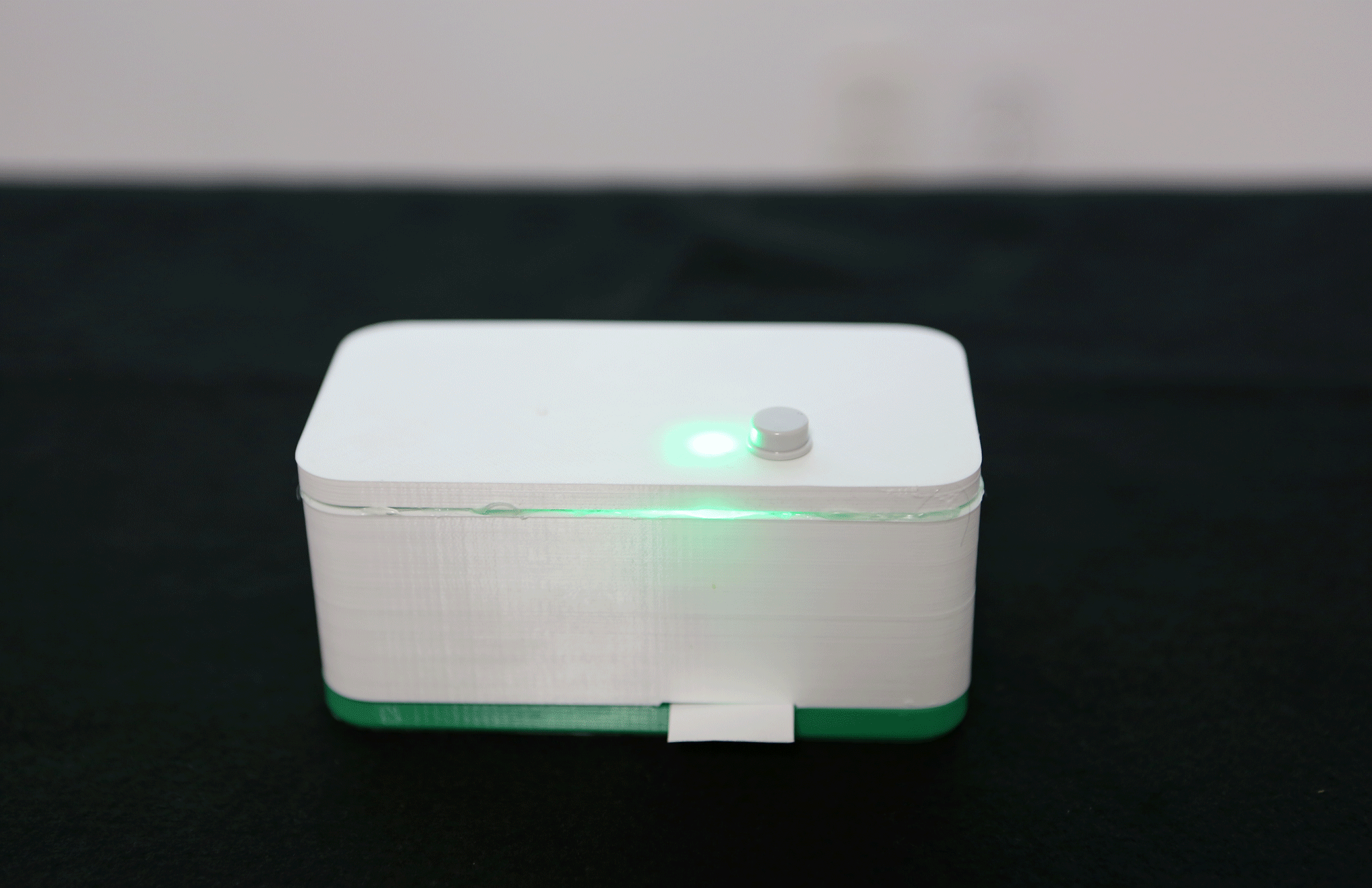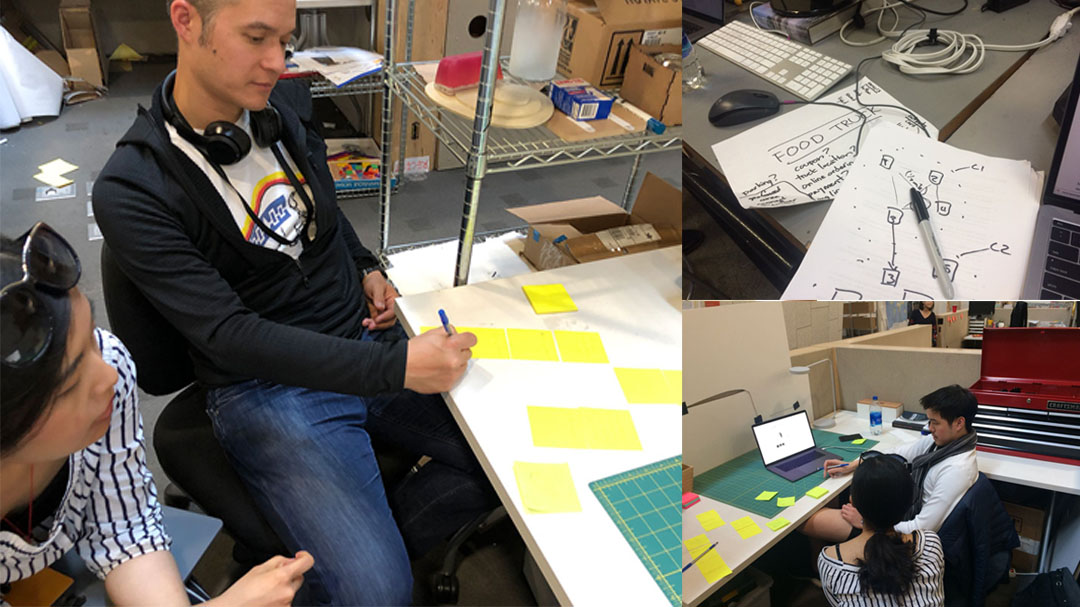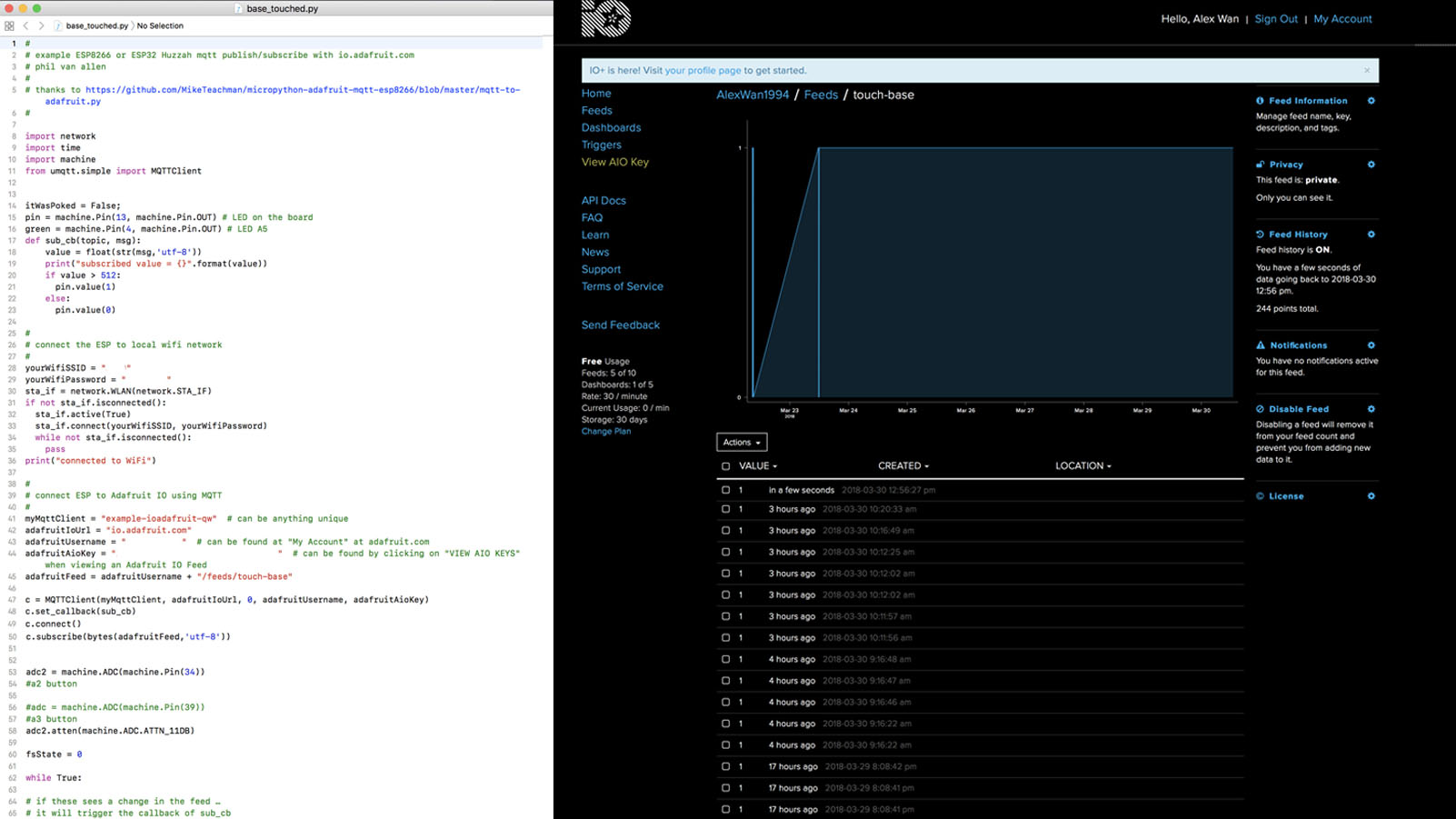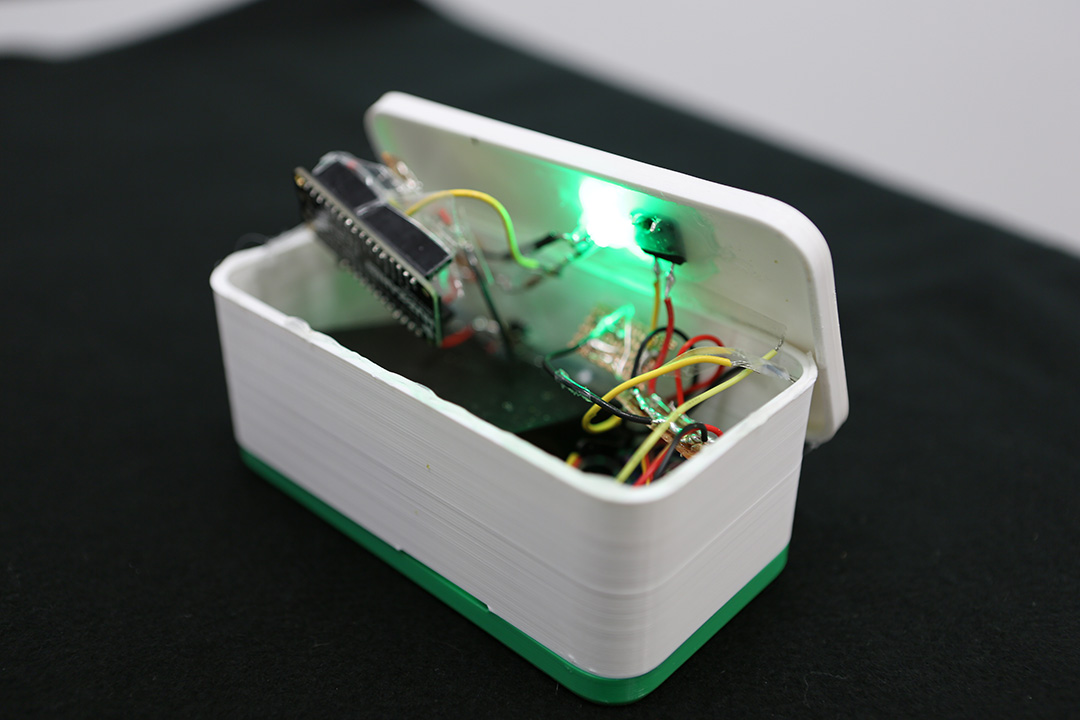Comida Vecina
OVERVIEW
Food culture and community are strong in Mexico City. A recent phenomenon in the city is the growing popularity of food trucks. With this in mind our group created Comida Vecina, which translates to "Neighbor Food". Comida Vecina seeks to celebrate the depth of the Mexico City food culture, and highlight the temporary communities formed among the wide variety of food trucks and their customers.
Collaborators Alex Qian Wan and Jom Sirimongkolkasem
HOW IT WORKS
-Each Comida Vecina device lives and operates in individual food trucks
-Food truck vendors turn on the device when they park somewhere and are ready to open and serve food
-Pressing a button on the rear of the device powers it on and sends out its GPS coordinates to the cloud and searches for other nearby devices in use
-A mobile, temporary, community of food trucks is then formed with nearby trucks
-Social networks (FB, Twitter, etc.) are updated with the truck location (if the vendor chooses set them up via a web interface)
-A green indicator light lets the vendor know that the device is powered on, the previous actions are complete, that they are connected to a food truck network
-When customers purchase food a second button, on top of the device, can be pressed by the vendor to generate a coupon good for that food truck, as well as food trucks in the mobile community offering different types of cuisine

BACKGROUND
Why food trucks?
We chose food trucks as our context after becoming interested in the diverse range of cuisine served among the trucks. These different foods have distinct flavors and originate from a variety of parts of the country. We also wanted to explore the unique affordance presented by trucks in that they move about to different locations throughout the city.

food truck micro-community forming
What is it like now?
A simplified look at how a food truck currently operates in the city is that a vendor drives to a location, parks, and opens for business. Often this is in close proximity to other food trucks, for example, gathering along a street near businesses during lunch time. After parking, the truck vendor might tweet or update on Facebook to let customers know their location and that they are open. Beyond that, there is often little in the way of promotion or advertising.

Identifying opportunities
It was important to our group that we considered in our ideation and making process the desirability, feasibility, and viability of a technological device in the food truck space. We aimed to create a low cost system that could be deployed in quantity throughout the city. Aligning with these parameters helped to influence the size, shape, and materials of the device, as well as the technology used to perform its operations.
How might we…?
We gathered our research and findings and formed the question, “How might we simplify the process of trucks letting customers know where they are when they are open, and leverage the temporary micro-community of food trucks so that they might support one another while providing a positive customer experience?” This question would serve as the base for our prototype.

REFLECTION
We learned many lessons through the process of creating the prototype. This led to questions we would seek to answer through a next round of prototypes. Future prototype considerations and areas for research include:
-Testing different card formats
-Testing expiration dates for coupon
-How might temporary micro-communities celebrate their unique nature? (names, brand identity, behaviors?)
-What does the vendor web interface look like? (customize the amount of the discount, select preferred cuisines to partner with, etc.)
-Perform field research to hone in on particular food style contrasts and compliments

prototype design to 3D print

3D printing process

example of code and cloud interaction
MATERIALS AND TOOLS
ESP32 Chip Microcontroller (x2)
Micro Servo
LED
Solder and wire
External Battery Pack
Switches (toggle x2)
MakeItPro 3D printer
Rhinoceros
Adafruit IO

testing before soldering and enclosure
PROJECT BRIEF
Context
Using the context of Mexico City and its surrounding rural and agricultural areas, design and prototype a small device that would influence people and conditions in this area in an interesting way.
Technical Constraints
The device you design should be a low cost, cloud connected system that can be deployed in quantity.
Technical Requirements
-Use the ESP32 board (as if connecting by cellular network)
-3D print the enclosure
-Include a battery
-There must be local behavior on the ESP32 that responds to local sensor input and creates an output
-There must also be behavior that responds to data from or sends data to the network

coupon examples

prototype interior

Comida Vecina initiated tweet notification
CLASS
Creative Technology II
INSTRUCTOR
Phil van Allen